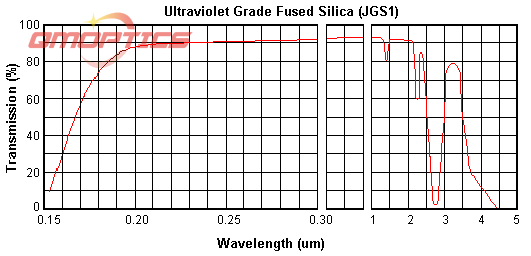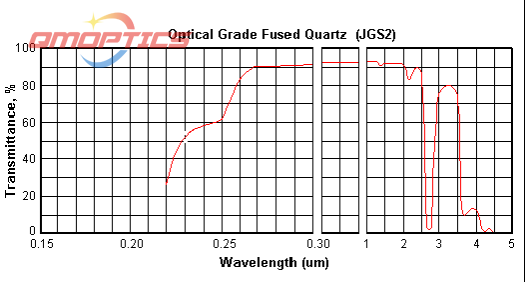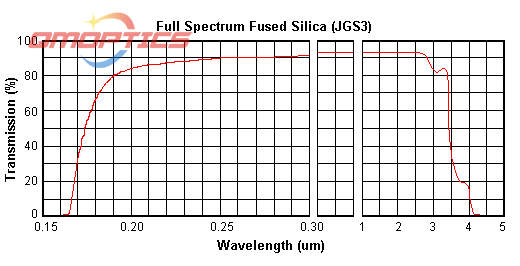
The optical properties of quartz glass discs are unique, as they can transmit far ultraviolet light, making them the best among all UV transparent materials, as well as visible light and near-infrared spectra. Due to its high temperature resistance, extremely low thermal expansion coefficient, good chemical stability, and comparable bubble, stripe, uniformity, and birefringence to general optical glass, quartz glass is an essential optical material with high stability optical coefficient that works in various harsh environments.
Quartz glass plates are usually colorless and transparent. They can transmit far ultraviolet light, which is the best among all UV transparent materials, as well as visible light and near-infrared spectra. According to its optical performance, it can be divided into three categories:
Far ultraviolet JGS1
Transparent in the ultraviolet and visible spectral ranges; There is no absorption band in the wavelength range of 185-2500nm; There is a strong absorption band in the 2600-2800nm wavelength range; Non luminous, stable light radiation.

UV class JGS2
Transparent in the ultraviolet and visible spectral ranges; There is no absorption band in the frequency range of 200-2500nm; There is a strong absorption band in the 2600-2800nm wavelength range; Non luminous, stable light radiation.

Infrared JGS3
Transparent in the visible and infrared spectral range; There is no obvious absorption band in the 2600-2800nm wavelength range.
